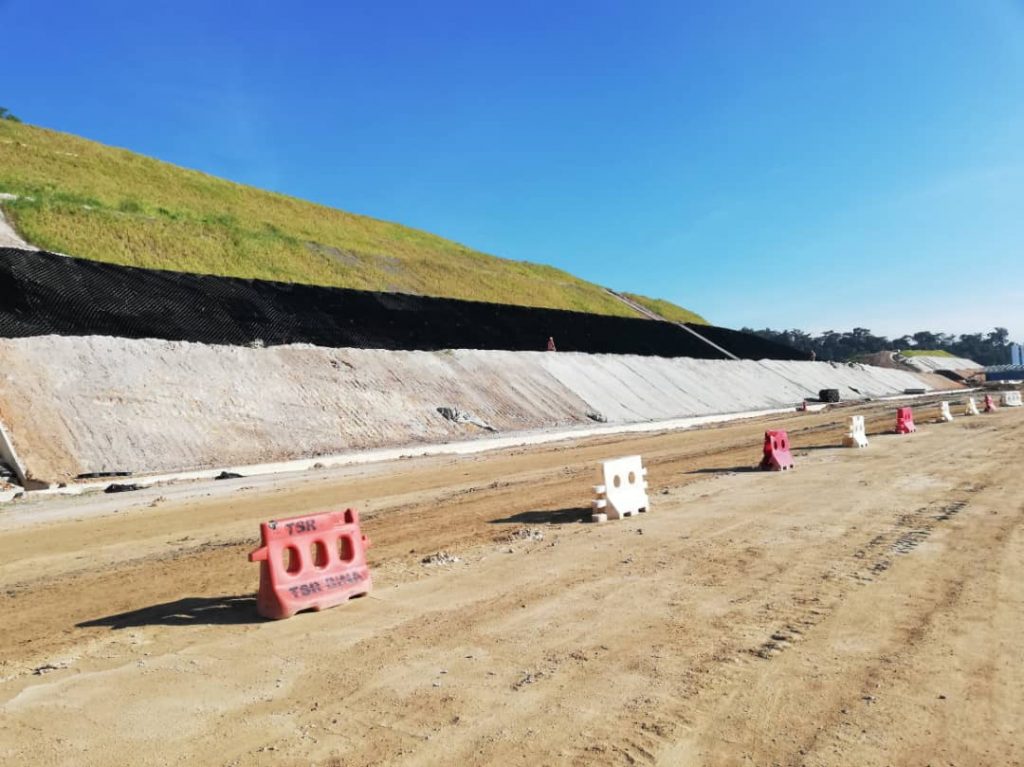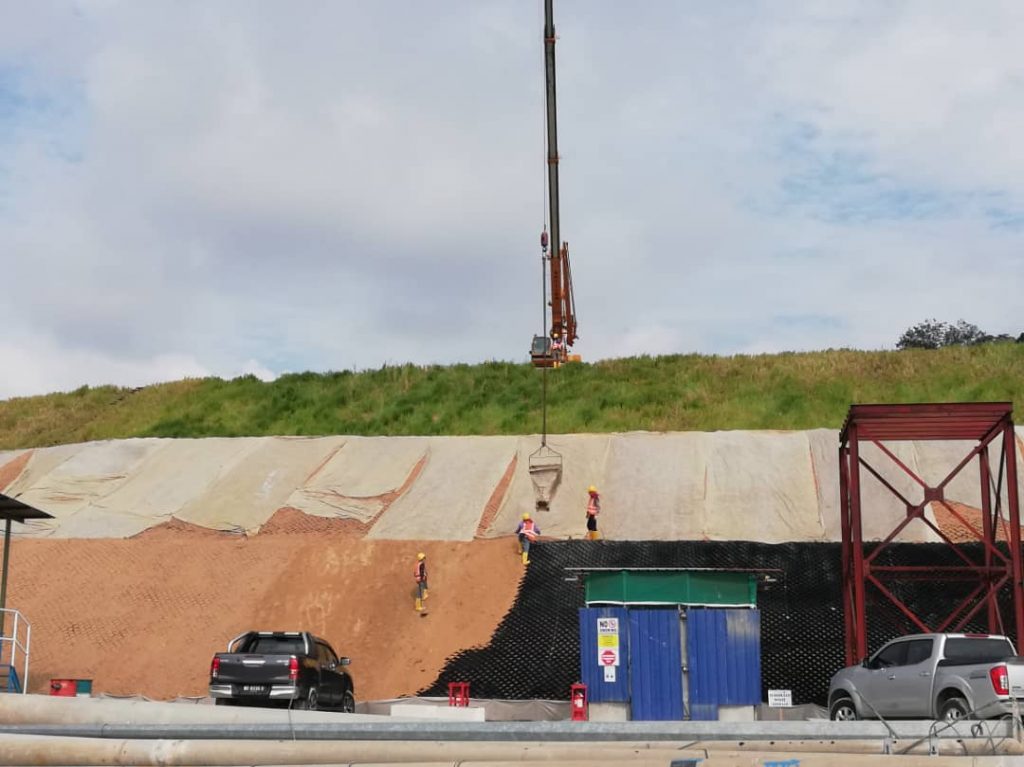
Highway and road construction often requires effective solutions to ensure slope stability and prevent soil erosion, especially on challenging terrains. Geocell technology, known for its ability to reinforce soils and prevent slope failures, has become a popular choice for engineers in road construction.
In this article, we explore how geocell slope protection enhances stability on highway and road slopes, elaborating on its advantages and practical applications in modern highway construction.
Geocell slope protection involves a three-dimensional, honeycomb-like structure, typically made from high-density polyethylene (HDPE), which reinforces soil. When filled with materials such as soil, sand, or gravel, geocells create a composite that resists erosion and strengthens slope stability. This cellular confinement system minimizes soil displacement, making it an ideal solution for areas vulnerable to slope failures or erosion, particularly along highways and roads.
In road construction, especially in regions with steep or unstable terrain, slopes are prone to erosion, landslides, and overall instability. Unstable slopes can endanger the integrity of roads and highways, posing risks to both infrastructure and public safety.
Slope protection, therefore, becomes an essential aspect of highway construction projects, with the geocell method offering a reliable approach that withstands environmental stressors and preserves slope integrity.
Geocells play an important role in stabilizing highway slopes and offer benefits that address the specific needs of road construction projects:
In highway construction, geocells are applied to a variety of terrains and soil types. Engineers often use this technology to reinforce soft soils, protect embankments, and stabilize slopes. The technology is versatile, catering to different environmental challenges, from arid regions prone to erosion to areas with high moisture content where soil stability is compromised.
Before installing geocells, the slope is cleared, and any unstable material is removed. This step ensures a clean base for placing the geocell system.
Geocells are placed on the slope and expanded into their honeycomb structure. They are anchored securely to prevent shifting during filling.
Once the cells are in place, they are filled with materials such as soil, sand, or gravel, which provide stability. The choice of fill material depends on the specific slope conditions and environmental factors.
In some projects, vegetation is introduced to the surface, utilizing the geocell’s ability to promote root growth and natural soil reinforcement.
This straightforward installation process saves time and resources, providing a stable and long-lasting solution for highway slopes.
A practical example of effective geocell slope protection can be seen in GSSB’s TSR MRT Geocell project. GSSB utilized geocell technology to reinforce and stabilize slopes in areas associated with the MRT project.
The project demonstrated the potential of geocells to manage challenging terrains and deliver reliable stability on construction sites, illustrating the versatility and efficiency of this innovative approach in modern infrastructure projects.

Geocells contribute positively to sustainability in road construction. Unlike other materials, they have a minimal environmental footprint. Their ability to integrate with natural vegetation reduces the need for invasive construction materials. Additionally, geocells’ durability and resistance to weather-related wear extend the life of road structures, cutting down on frequent maintenance and associated environmental disruptions.
Slope protection in highway construction presents unique challenges, from fluctuating soil conditions to the impact of natural forces. Geocell technology addresses these challenges effectively through:
Geocells prevent soil loss and enhance water drainage, essential for slopes near highways exposed to heavy rainfall.
The flexibility and high-load tolerance of geocells make them ideal for steep or uneven terrain, commonly found in road construction.
Geocells work well with various soil types, providing stability in sandy, clay, or loamy soils often encountered along highways.
These capabilities make geocells a dependable solution, tailored to meet the demands of each unique highway project.
Geocell slope protection offers a reliable, cost-effective, and environmentally-friendly solution for enhancing stability in highway and road slopes. Through reinforcing soil and preventing erosion, geocells address the key challenges faced in highway construction, which contributes to safer and more resilient infrastructure. As infrastructure needs grow, geocell technology is set to play an even more prominent role in ensuring the longevity and sustainability of roads and highways.
Copyright © Gateway Structure Sdn Bhd (199401025111). All Right Reserved.